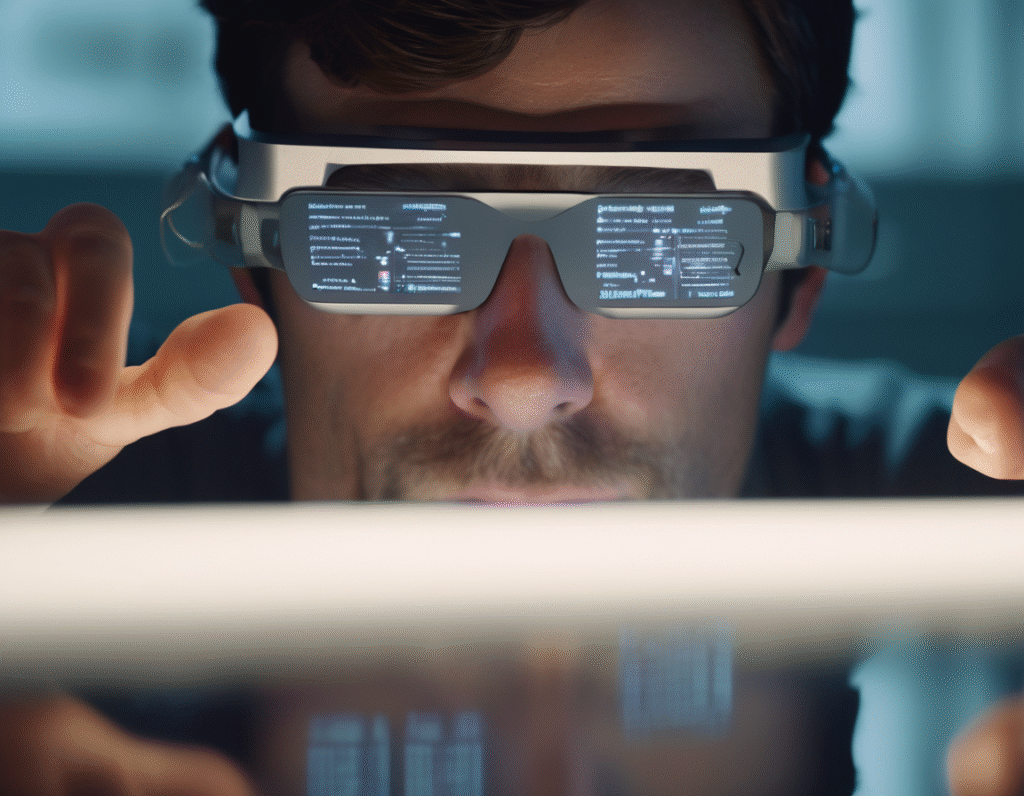Apple Should Build a Vision Air, Not Just a Cheaper Vision Pro Forget Samsungs upcoming Galaxy XR headset, priced around eighteen hundred dollars. The Android XR device that actually captures my interest is Xreals Project Aura. This is an evolution of the companys smart glasses, which are fundamentally different from bulky headsets like the Galaxy XR and Apples Vision Pro. Xreals devices resemble oversized sunglasses with transparent lenses that project a virtual display. I genuinely loved the Xreal One Pro for its comfort, large screen size, and its six hundred forty nine dollar price tag. Now, after testing the M5-equipped Vision Pro, it is clearer than ever that Apple should replicate Xreals winning formula. A smaller, sub-one thousand dollar Vision Pro is likely years away. However, Apple could easily develop a similar set of comfortable smart glasses that are actually affordable for more people. If they functioned like Xreals glasses, they would also be far more practical than something like Metas eight hundred dollar Ray-Ban Display, which only offers a tiny screen for notifications and quick video chats. While we do not have pricing for Project Aura yet, Xreals history of devices costing between two hundred and six hundred forty nine dollars suggests it will be cheaper than the Galaxy XR. Xreals hardware is less complex, using smaller displays, a more limited field of view, and no built-in battery. Project Aura introduces a tethered computing puck to power the Android XR experience, which might include a battery. This could push its price closer to one thousand dollars, but that is still far better than eighteen hundred. Using the Vision Pro made me imagine a Vision Air from Apple. The basic sunglasses design is straightforward to copy, and Apple could use lighter, premium materials to enhance comfort. It would undoubtedly be lighter than the one point six pound Vision Pro. Because you see the real world through the lenses, it avoids the claustrophobic feeling of being trapped inside a VR headset. To power this hypothetical Vision Air, Apple could adapt the Vision Pros external battery into a computing puck, similar to Project Auras. It would not need the full power of the M5 chip, just enough capability to manage virtual windows, map objects in space, and run most visionOS apps. It would also require fewer cameras and sensors, needing only enough to track your eyes and fingers. Apple could also match or exceed Project Auras seventy degree field of view, a significant jump from the fifty seven degrees on the Xreal One Pro. A limited field of view was a major drawback of early AR devices, making virtual screens feel like they were viewed through a tiny window. With the Xreal One Pro, I could see a massive two hundred twenty two inch virtual display. A wider field of view would be even more immersive. In my review of the original Vision Pro, I noted that if Apple sold a one thousand dollar headset that simply virtualized a Mac screen this well, creative professionals would flock to it. This should be the goal for a Vision Air. Even if an Apple tax pushed the price to fifteen hundred dollars, it would be a more sensible product than the three thousand five hundred dollar Vision Pro. I am not overly optimistic about Android XR, but its existence should push Apple to double down on visionOS and finally deliver an affordable device. If Xreal can make comfortable, functional smart glasses for a fraction of the cost, why cannot Apple?


